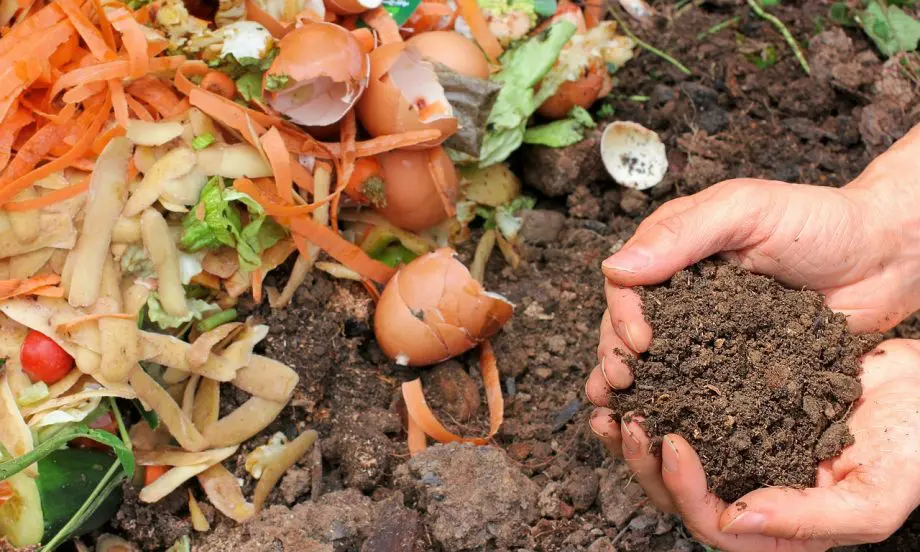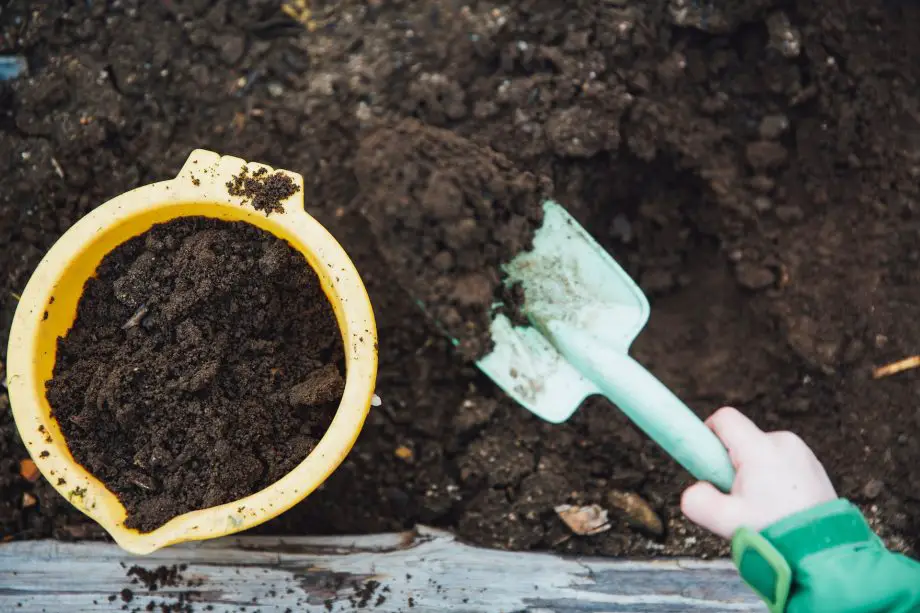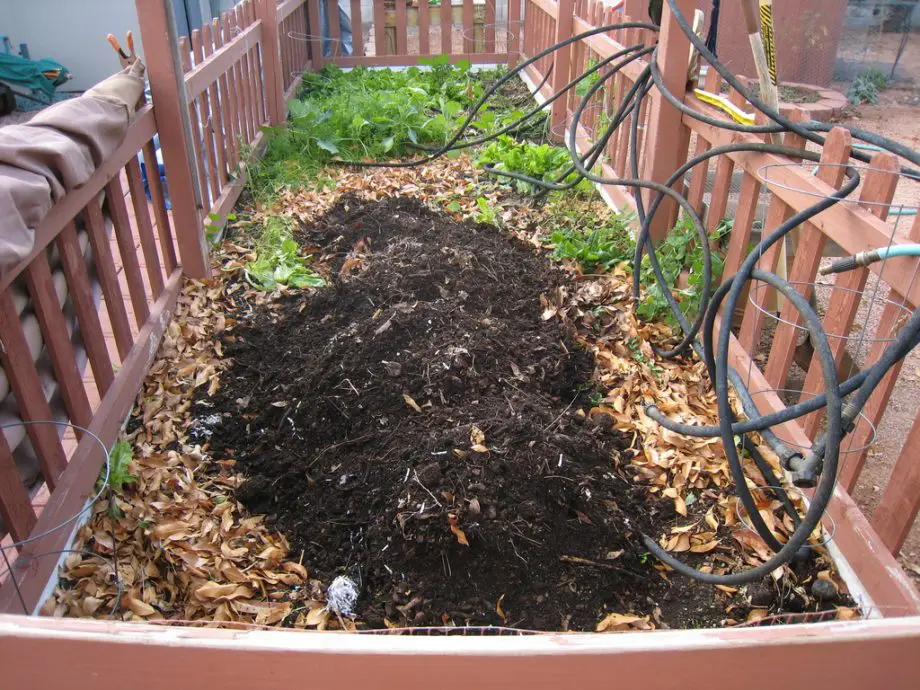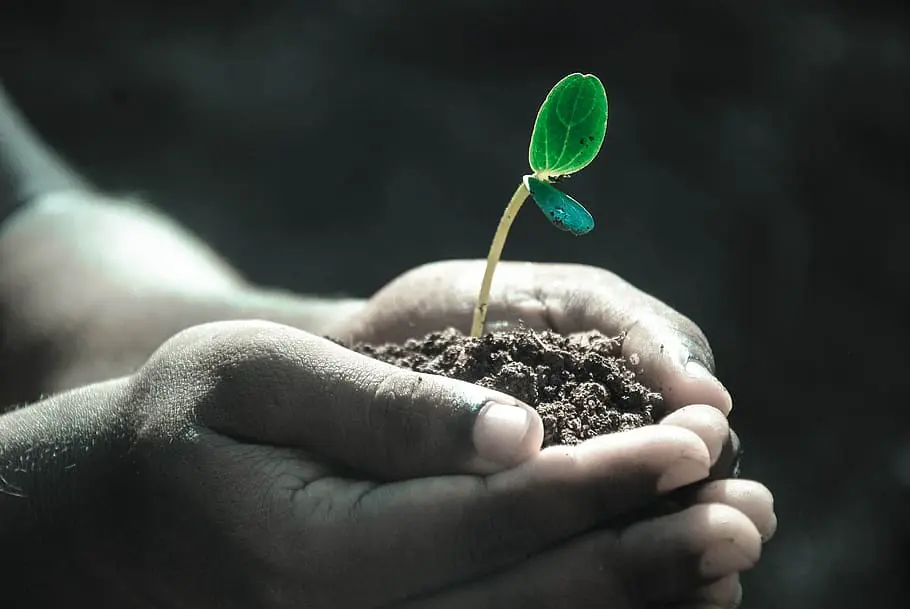
Discover the different types of home composting methods in our latest blog post. Turn your kitchen scraps into garden gold with our easy-to-follow guide!
Ever wondered how you can turn your kitchen scraps into something truly valuable for your garden?
Well, you’re in the right place! Our guide on ‘different types of home composting methods’ is here to show you how.
With a little time and the right know-how, you can transform your everyday waste into nutrient-rich compost.
Let’s dive in and explore the world of home composting together!
Different Types of Home Composting Methods
Welcome to our comprehensive guide on different types of home composting methods.
If you’ve ever been curious about composting at home but felt overwhelmed by the variety of methods available, this post is for you.
We’ll be covering everything from the basics of composting to the specific factors that affect the process.
We’ll also delve into the various methods you can use right in your backyard, from simple wire compost bins to innovative techniques like lasagna gardening.
By the end of this post, you’ll have a solid understanding of home composting methods and be ready to start your own composting journey. So, let’s get started!
Importance of Composting
Composting is more than just a trendy buzzword in the world of gardening; it’s a practice that holds significant benefits for our environment and for our gardens.
When we compost, we’re essentially recycling organic waste, turning things like vegetable peels, coffee grounds, and yard trimmings into a nutrient-rich soil conditioner.
This process not only reduces the amount of waste that ends up in our landfills but also enriches our soil, promoting healthier plant growth.
Plus, it’s a fantastic way to reduce our carbon footprint. So, by composting, we’re not just creating a thriving garden, we’re also contributing to a healthier planet.
Brief Overview of Different Composting Methods
Now that we’ve covered why composting is important, let’s talk about how we can do it.
There are several different methods of composting, each with its own set of advantages and considerations.
Some methods, like onsite composting, are perfect for those with large gardens and a lot of yard waste.
Others, like vermicomposting or using a simple wire compost bin, are better suited for those with smaller spaces or those who primarily want to compost kitchen scraps.
In the following sections, we’ll dive deeper into each of these methods, helping you choose the one that’s right for your home and lifestyle.
So, whether you’re a seasoned gardener or just starting your green journey, there’s a composting method out there for you.
Understanding the Composting Process
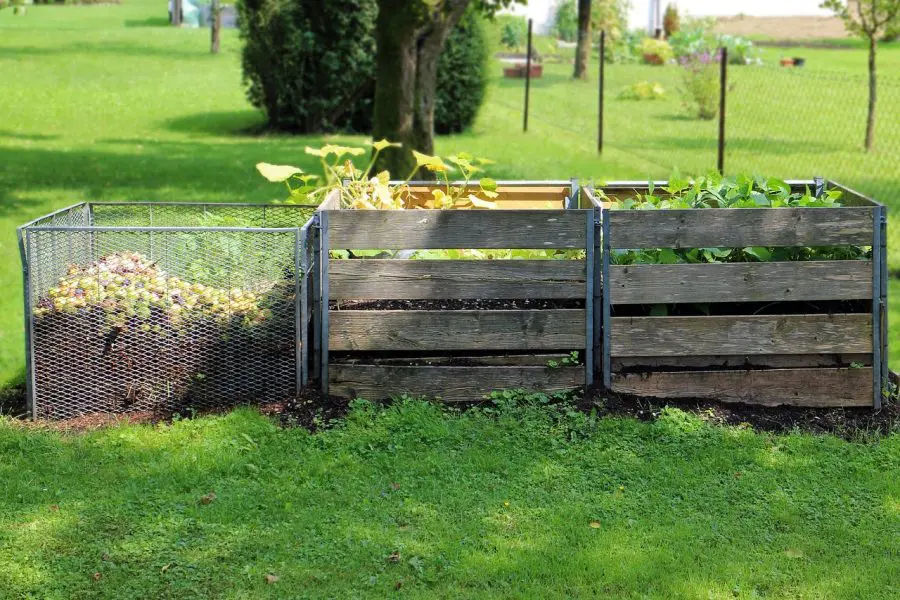
Ready to get your hands dirty? Great, because we’re about to dive into the heart of the composting process itself.
Understanding the composting process is like having a backstage pass to a magic show.
You get to see how everyday materials like banana peels and grass clippings transform into a rich, fertile supplement for your garden.
It’s a fascinating journey that involves a little bit of science, a touch of patience, and a whole lot of nature’s magic. So, let’s roll up our sleeves and get started!
Basics of Composting
Composting, at its core, is a natural process where organic materials decompose into a rich soil known as compost.
It’s nature’s way of recycling! This process is carried out by microorganisms like bacteria and fungi, along with larger creatures like worms and insects.
These little helpers break down the organic material into nutrient-rich compost that can be used to feed your plants.
It’s like creating your own organic fertilizer right at home! The beauty of composting is that it can be as simple or as involved as you want it to be.
From a basic compost pile in your backyard to a high-tech compost tumbler, there’s a method to suit every lifestyle.
Factors Affecting Composting
Now, let’s talk about the key players in the composting game. There are several factors that can affect the composting process:
Feedstock and Nutrient Balance: The type of organic material you’re composting (known as feedstock) and its nutrient balance play a crucial role.
A good mix of ‘green’ materials (like vegetable scraps, which provide nitrogen) and ‘brown’ materials (like dried leaves, which provide carbon) is essential.
Particle Size: The size of the materials you’re composting also matters. Smaller pieces decompose faster because they have more surface area for the microorganisms to work on.
Moisture Content: Composting microorganisms need water to survive and do their job. Your compost pile should be as damp as a wrung-out sponge – not too dry, but not waterlogged either.
Oxygen Flow: These microorganisms also need oxygen to survive. That’s why turning your compost pile every now and then is important. It helps aerate the pile and speeds up the composting process.
Temperature: Heat is a byproduct of the composting process. A hot compost pile is a sign that the microorganisms are hard at work. However, if the pile gets too hot, it can kill these helpful creatures.
Understanding these factors can help you manage your compost pile effectively and ensure a successful composting process.
So, keep these in mind as we explore the different composting methods in the next section!
Types of Home Composting Methods
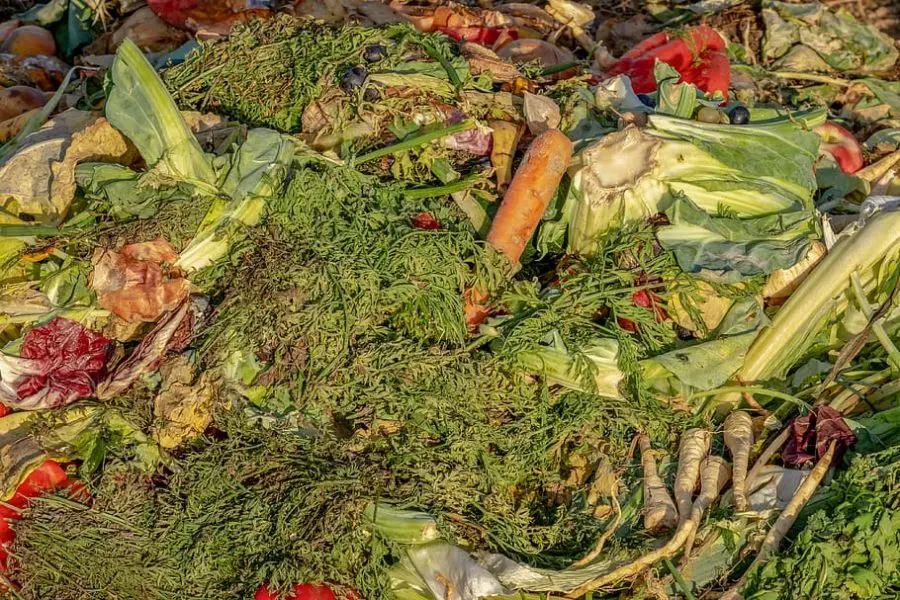
Are you ready to start your composting adventure? Perfect, because it’s time to explore the types of home composting methods.
There’s no one-size-fits-all when it comes to composting. The method you choose will depend on your lifestyle, the amount of space you have, and the type of waste you generate.
From simple onsite composting to more specialized methods like vermicomposting, there’s a method to suit everyone.
So, let’s delve into each of these methods and find the one that’s perfect for you. It’s time to turn your waste into wonder!
Onsite Composting
Onsite composting is perhaps the simplest method and a great starting point for beginners.
It involves collecting organic waste like vegetable peels, coffee grounds, and yard trimmings, and piling them up in a designated spot in your yard.
Over time, with a little turning and watering, this pile will decompose into rich, fertile compost.
It’s a low-maintenance method that’s perfect for those with a large yard and lots of organic waste.
Vermicomposting
Vermicomposting, or worm composting, is a fun and efficient method of composting.
It involves using worms (usually red wigglers) to eat through your organic waste and produce worm castings, a super nutrient-rich form of compost.
Vermicomposting can be done in a specialized worm bin and is a great option for those with limited outdoor space, as it can be done indoors.
Aerated (Turned) Windrow Composting

This method involves creating long, narrow piles of organic waste called windrows.
These windrows are regularly turned to introduce oxygen, which speeds up the composting process.
This method is more labor-intensive but results in faster compost production.
It’s a great option for those with large amounts of waste and the time to regularly turn the compost.
Aerated Static Pile Composting
In this method, organic waste is piled up and aerated using tubes that introduce air into the pile.
This method requires less labor than windrow composting, as the pile doesn’t need to be turned.
It’s a good option for those with a moderate amount of waste and limited time for compost maintenance.
In-Vessel Composting
In-vessel composting involves composting organic waste within a contained system.
This could be a drum, a bin, or a specially designed vessel. This method allows for greater control over the composting conditions and is a good option for those with limited space or those who want to compost year-round, regardless of weather conditions.
Simple Wire Compost Bin
A simple wire compost bin is just that – a compost bin made from wire mesh.
It’s an easy and affordable composting option that allows for good airflow.
It’s a good choice for those on a budget or those looking for a simple, no-fuss composting method.
Plastic Storage Bin Composter
This method involves using a plastic storage bin with holes drilled into it for aeration. It’s a compact and affordable composting option that can be done indoors or outdoors.
It’s a good choice for those with limited space or those who want to compost small amounts of kitchen waste.
Trash Can Composter
A trash can composter is a larger version of the plastic storage bin composter.
It involves using a trash can with holes drilled into it for aeration. It’s a good option for those who generate a lot of kitchen waste or those who want a discreet composting option.
Lasagna Gardening, AKA Sheet Composting
Lasagna gardening, also known as sheet composting, involves layering green and brown materials directly on your garden bed, just like you would layer ingredients in a lasagna
Over time, these layers decompose and enrich the soil. It’s a great method for those looking to improve their garden soil without having to maintain a compost pile.
Tumbling Composters and Why We Prefer Them
Introduction to Tumbling Composters
If you’re looking for a composting method that’s easy, efficient and requires minimal effort, then tumbling composters might just be the ticket.
These handy devices take the hard work out of composting, making it a breeze to turn your kitchen scraps and yard waste into nutrient-rich compost.
Let’s take a closer look at what tumbling composters are and how they can revolutionize your composting routine.
How Tumbling Composters Work
Tumbling composters are essentially compost bins mounted on a frame that allows them to rotate.
This design makes it easy to mix and aerate your compost simply by turning the bin, rather than manually stirring the compost pile.
The enclosed design also helps maintain optimal composting conditions, speeding up the composting process and keeping pests at bay.
Benefits of Tumbling Composters
Tumbling composters offer several benefits. They’re compact and contained, making them a great choice for small spaces.
They also speed up the composting process, thanks to their easy aeration and efficient mixing.
Plus, they’re easy to use and require less physical effort than traditional composting methods.
So, if you’re looking for a composting method that’s low on effort but high on efficiency, a tumbling composter could be just what you need.
Choosing a Tumbling Composter
When choosing a tumbling composter, consider factors like size, material, and ease of use.
Make sure it’s large enough to handle your composting needs but small enough to fit your space.
Look for durable materials that can withstand the elements, and opt for a design that’s easy to turn and unload.
With the right tumbling composter, you’ll be well on your way to easy, efficient composting.
Final Thoughts on Tumbling Composters
Tumbling composters are a fantastic tool for any home composter.
They offer a simple, efficient way to compost your kitchen scraps and yard waste, turning what could be a chore into a quick and easy part of your routine.
So why not give tumbling composters a try? Your garden will thank you!
FAQs on Home Composting Methods

Still got questions about home composting methods? Don’t worry, we’ve got you covered!
In this section, we’ll tackle some of the most frequently asked questions about composting at home.
From understanding the different types of composting to figuring out the best method for your home, we’ll provide the answers you need.
So, let’s dive into these FAQs and demystify the world of home composting together!
Q: What are the different types of home composting?
A: There are several types of home composting methods, each suited to different needs and circumstances. These include:
• onsite composting
• vermicomposting,
• aerated (turned) windrow composting
• aerated static pile composting
• in-vessel composting
• using a simple wire compost bin
• using a plastic storage bin composter
• using a trash can composter
• lasagna gardening, also known as sheet composting.
Q: What are the 5 composting methods?
A: While there are numerous composting methods, here are five common ones used in home composting:
Onsite Composting: This involves creating a compost pile in your backyard where you add organic waste and let it decompose naturally.
Vermicomposting: This method uses worms to eat through organic waste and produce nutrient-rich compost.
Aerated (Turned) Windrow Composting: This involves creating long, narrow piles of organic waste that are regularly turned to introduce oxygen and speed up the composting process.
In-Vessel Composting: This method involves composting organic waste within a contained system like a drum or bin.
Lasagna Gardening (Sheet Composting): This involves layering green and brown materials directly on your garden bed, where they decompose and enrich the soil.
Q: What is the best compost method for home use?
A: The best composting method for home use depends on your specific circumstances, such as the amount of space you have, the type of waste you generate, and how much time you can dedicate to composting.
For those with limited space, methods like vermicomposting or using a plastic storage bin composter might be best.
For those with larger yards and more organic waste, onsite composting or aerated windrow composting might be more suitable.
Q: What is the most common method of composting?
A: The most common method of composting is probably onsite composting.
This method is straightforward and requires minimal equipment, making it a popular choice for many homeowners.
It involves simply creating a compost pile in your backyard, adding organic waste, and letting it decompose naturally over time.
Different Home Composting Methods Final Thoughts

As we wrap up our journey through the world of home composting, it’s time to reflect on what we’ve learned and look forward to how we can apply this knowledge.
Whether you’re a seasoned gardener or a beginner looking to make your lifestyle a little greener, understanding the different types of home composting methods can open up new possibilities.
So, let’s take a moment to recap and consider the next steps on your composting journey.
Remember, every bit of composting makes a difference, not just for your garden, but for our planet too!
Recap of the Importance and Types of Composting Methods
We’ve covered a lot of ground in this post, haven’t we?
We started by understanding the importance of composting and how it’s not just about creating nutrient-rich soil for our gardens, but also about reducing waste and contributing to a healthier planet.
We then explored the composting process, understanding the key factors that influence it, from the type of organic waste we use to the conditions we maintain.
We also delved into the different types of home composting methods.
From the simplicity of onsite composting to the efficiency of vermicomposting, from the quick results of aerated windrow composting to the convenience of in-vessel composting, we saw that there’s a composting method to suit every lifestyle and need.
Whether you have a large backyard or a small apartment, whether you generate a lot of yard waste or just kitchen scraps, there’s a composting method for you.
Encouragement for Readers to Start Composting at Home
Now that you’re armed with all this knowledge, we encourage you to take the next step and start composting at home.
It might seem a little daunting at first, but remember, every composting journey starts with a single step or in this case, a single compost pile.
Start small, experiment, learn from your experiences, and gradually, you’ll find that composting becomes a natural part of your lifestyle.
And the rewards are rich, fertile soil for your garden, reduced waste, and the satisfaction of doing your bit for the planet and are well worth the effort.
So, go ahead, give composting a try. Your garden, and our planet, will thank you!








